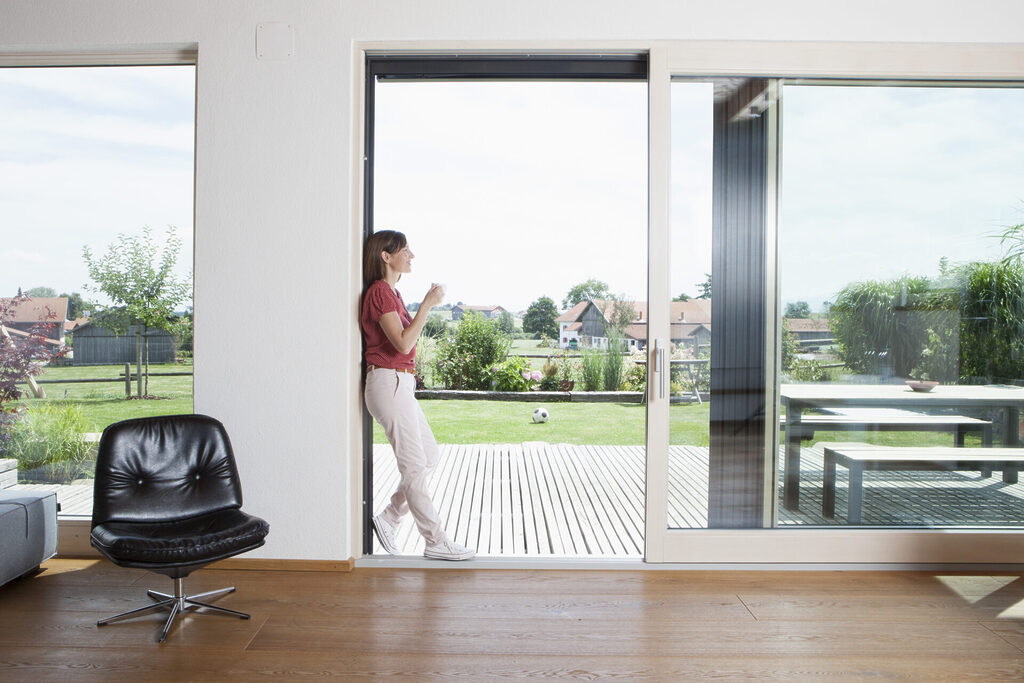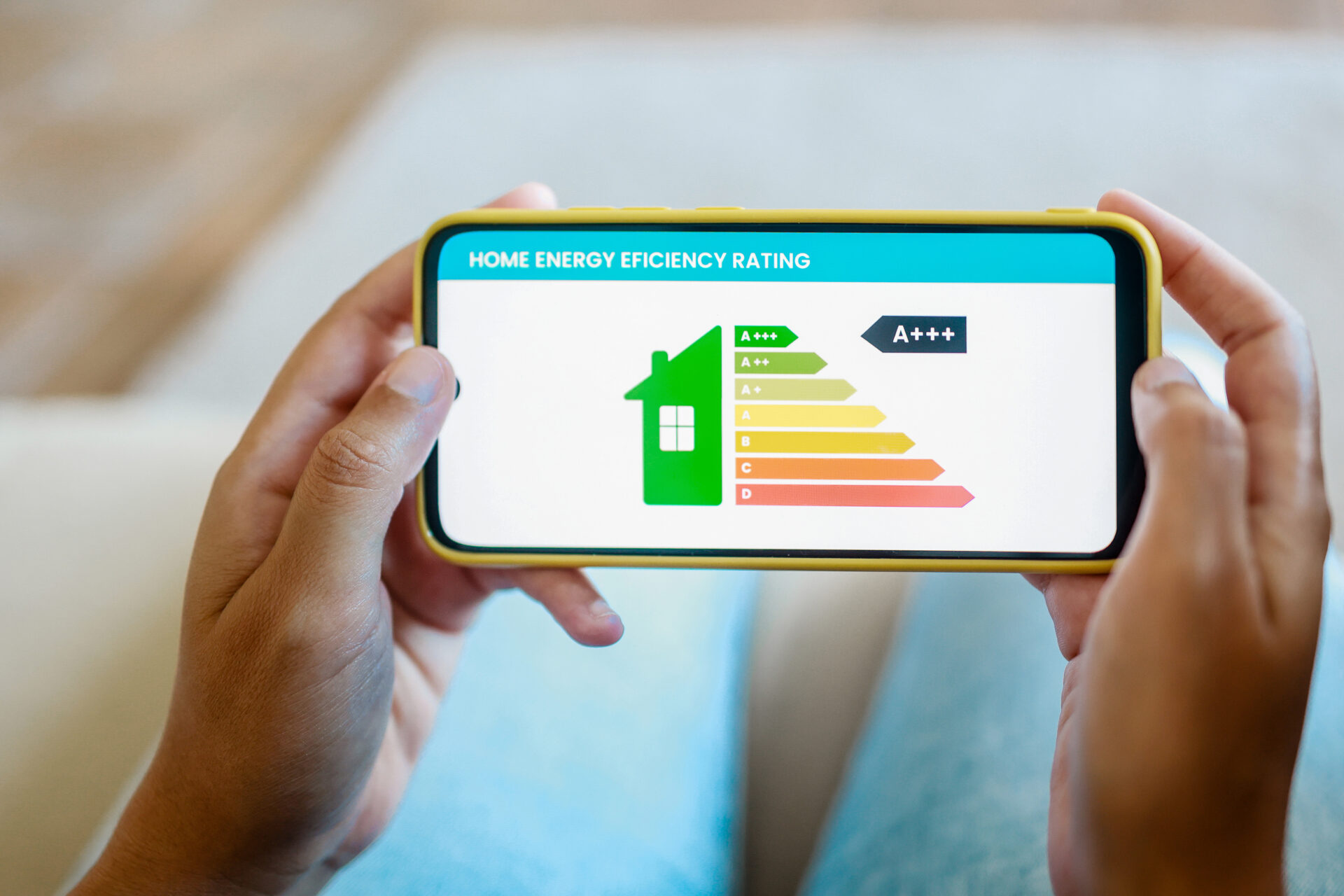Last Updated on 27 May 2025 by Team GFD
Energy Ratings Explained: Why are they so important?
Energy ratings are important because they help you choose windows and doors that reduce heat loss, lower energy bills, improve comfort, and boost your home’s overall efficiency.
What’s Included in This Article:
- What energy ratings are and how they’re calculated
- Key energy terms explained
- Why energy ratings matter
- Energy-efficient windows, doors, and roof systems at GFD Homes
- FAQs
(Estimated reading time: 4–5 minutes)
Introduction
Energy efficiency is no longer just a buzzword—it’s a key part of every UK homeowner’s renovation plan. Whether you’re replacing draughty windows or upgrading to a new front door, understanding energy ratings will help you make better decisions, cut energy bills, and stay compliant with ever-evolving building regulations.
In this article, we break down the key terms like U-values, Window Energy Ratings (WER), and how these relate to overall thermal efficiency, sustainability, and property value.
What Are Energy Ratings?
Energy ratings measure how effectively a product—like a window or door—retains heat. This includes both how much heat it loses and how much solar gain it allows in. The better the rating, the more efficient the product is.
In simple terms, energy ratings help homeowners choose products that keep their homes warmer in winter, cooler in summer, and cost less to run.
How Are Energy Ratings Calculated?
Energy ratings are calculated using a combination of:
- U-Value (Thermal Transmittance): This measures how much heat is lost through the product. Lower U-values = better insulation.
- Solar Gain (G-Value): This measures how much free heat is gained from sunlight. A higher G-value can reduce heating needs.
- Air Leakage: Measures how much air can escape or enter through the product’s seals and joints.

These three metrics are then processed through the BFRC (British Fenestration Rating Council) formula to produce a WER (Window Energy Rating) on a scale from A++ to G. This holistic approach balances heat loss, heat gain, and airtightness to give a true picture of performance.
Key Energy Terms Explained
U-Value – The Lower, The Better
U-value measures how quickly heat passes through a material (W/m²K). The lower the U-value, the better the insulation.
- A-rated windows generally have U-values around 1.2–1.4 W/m²K
- High-performance composite and aluminium doors can reach as low as 1.0 W/m²K or better
- Triple-glazing or advanced double-glazed units may dip below 1.0 W/m²K
WER – Window Energy Rating
WER stands for Window Energy Rating, a consumer-friendly system developed by the BFRC (British Fenestration Rating Council).
It uses a scale from A++ (best) to G (worst) and considers:
- U-value (thermal loss)
- G-value (solar gain)
- Air leakage
WER is often shown on a colour-coded label, similar to appliances.
Energy Efficiency Label
This coloured sticker (green to red) is now a legal requirement on most replacement windows. It gives homeowners a simple visual way to assess performance at a glance.
“Look for a U-value of 1.4 or lower and a WER rating of A or higher for top-tier performance.”
What’s a Good Energy Rating in the UK?
According to Part L of UK Building Regulations:
- Windows must have a minimum U-value of 1.4 W/m²K OR a WER of Band B or above
- Doors must have a U-value of 1.4 W/m²K or better
Premium products with U-values close to 1.0 or WERs of A+ or A++ offer the best insulation and are considered future-ready.
Why Energy Ratings Matter for Homeowners
Lower Energy Bills
Energy-efficient products keep the heat in, meaning you use your boiler or heating system less.
Year-Round Comfort
You’ll notice fewer cold spots and more even room temperatures—plus less overheating in summer if the glass includes solar control.
Increased Home Value
Homes with better EPC ratings (which consider glazing and insulation) are more attractive to buyers.
Better for the Environment
Lower energy use = fewer emissions. Choosing efficient windows and doors is a great step toward a greener home.
Energy Efficiency Across All GFD Products
At GFD Homes, every product we offer is built with energy performance in mind—from our composite doors to aluminium and uPVC window ranges, and even our roof systems. All meet or exceed UK regulations for thermal efficiency and can be further enhanced with glazing and hardware upgrades.
Customisable Efficiency Features:
- Low-U glazing units for better insulation
- Triple-glazing options on selected products
- Warm-edge spacers and gas-filled units
- Thermally broken frames for aluminium systems
- Solid-core composite doors with airtight seals
- High-quality seals and draught excluders as standard
Whether you’re choosing a Deceuninck uPVC window, a Smart Designer aluminium door, or a Korniche roof lantern, you can be confident that you’re getting a product designed for warmth, comfort, and lower energy bills—with the flexibility to upgrade performance even further.

Understand Energy Ratings with GFD Homes
Energy ratings are more than just a label—they’re a roadmap to a warmer, more efficient home. By understanding how U-values, WERs, and glazing choices work together, you can make smarter product decisions that improve your comfort, lower your energy bills, and support long-term sustainability.
At GFD Homes, every window, door, and roof glazing product we offer is designed with efficiency in mind—and with options to upgrade your performance even further, you’re in full control of your home’s energy future.
📞 Have questions? Call our expert team on 01642 309576.
🔍 Want to learn more? Visit our GFD Blog.
FAQs about Energy Ratings Explained
Which is the better energy rating, A or F?
A is significantly better than F. Energy ratings range from A++ (most efficient) to G (least efficient), so an A-rated product will retain heat far better and cost less to run than an F-rated one.
What is a good energy rating?
A good energy rating for windows or doors is A or above, with U-values of 1.4 W/m²K or lower, meeting or exceeding UK Building Regulations and ensuring strong thermal performance.
What is the difference between a ++ and a +++ energy rating?
In glazing, the common scale ends at A++, with ++ indicating better performance than A+ in terms of U-value, air tightness, and solar gain. “+++” is not a standard term in UK ratings and may be used informally by some manufacturers but isn’t officially recognised by the BFRC.
Beyond doors – expert tips and insights you won’t want to miss…
- Energy Ratings Explained: What UK Homeowners Need to Know
- How Draught Proofing Your Front Door Can Save You Money and Energy
- Trade Energy Efficiency Explained: looking for trade prices? Visit our trade site, The Trade Village.

